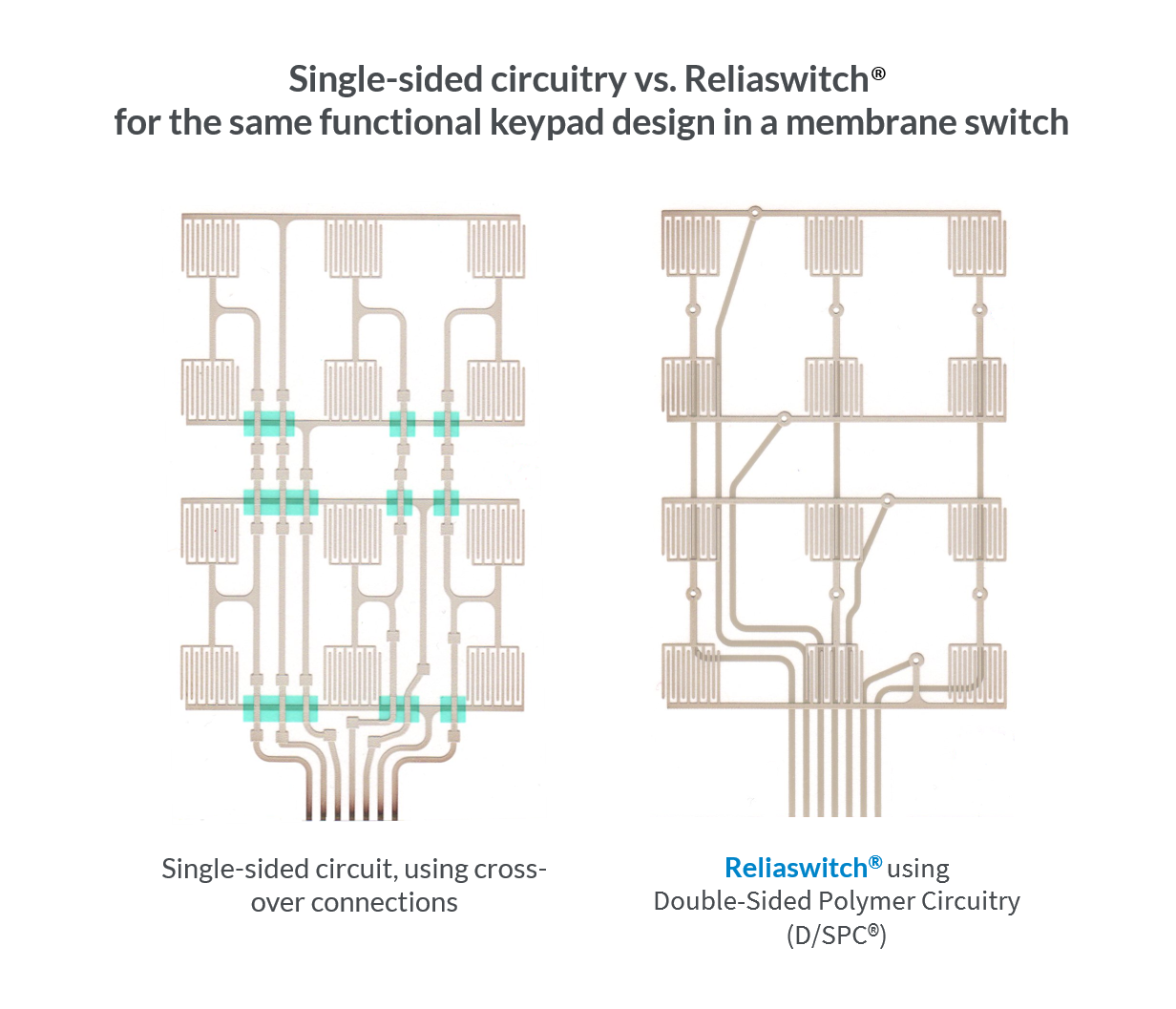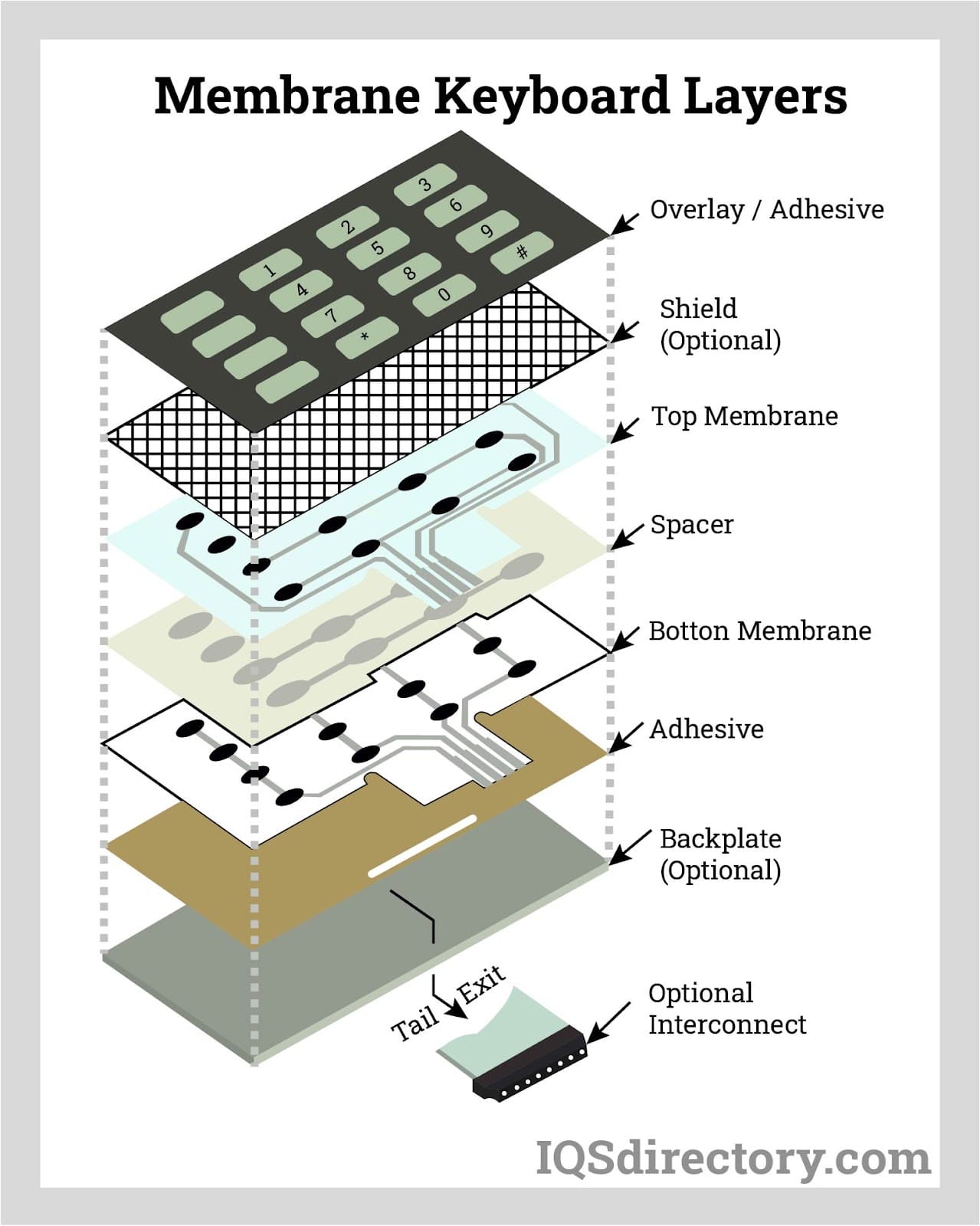Everything About Membrane Change: A Comprehensive Guide for Beginners
Membrane layer switches are crucial elements in modern electronics, supplying an unique user interface for user interaction - membrane switch. Their layered construction, consisting of overlays and conductive traces, provides performance and durability. Unlike standard mechanical buttons, membrane buttons offer a sleek style and personalized alternatives. Comprehending their essential features and benefits can transform product style. However, the complexities of their application and style factors to consider warrant additional expedition
What Is a Membrane Switch over?
A membrane button is a sort of electric button that includes a flexible membrane layer layered over a published circuit card. This design permits for a sleek and portable user interface, frequently used in various electronic devices. Membrane layer buttons are frequently located in consumer devices, medical devices, and commercial equipment because of their sturdiness and resistance to ecological factors.The building usually includes numerous layers, such as visuals overlays and adhesive support, which supply tactile feedback and shield the circuitry below. The operation of a membrane switch is launched when pressure is related to the surface area, finishing an electrical circuit.These buttons are valued for their versatility, enabling personalized styles and printed graphics that deal with particular interface. Their low-profile nature decreases space requirements, making them optimal for applications where typical buttons might not fit. In general, membrane buttons provide a useful and visual option for modern electronic gadgets.
Trick Components of Membrane Changes
Membrane layer changes comprise numerous key components that add to their performance and performance. The leading layer, called the overlay, offers the individual interface and is often printed with graphics or symbols. Beneath the overlay lies a spacer layer, which divides the conductive components and avoids unintended activation. The following important component is the graphic layer, which boosts aesthetic appeals and assures the resilience of the design.Conductive traces, typically made from materials like silver or carbon, are published on the circuit layer. When pressure is put on the overlay, these traces come right into call, finishing the circuit. In addition, a support layer provides structural support and can be made from products such as polyester or polycarbonate. Together, these components develop a reputable, straightforward user interface appropriate for different applications, from home devices to commercial devices. Comprehending these elements is essential for any person curious about membrane switch innovation.
How Membrane Changes Work
Comprehending just how membrane layer switches feature is necessary for appreciating their prevalent usage in different tools. A membrane layer switch runs with a collection of layers, consisting of a graphic overlay, spacer, and a circuit layer. When stress is applied to the overlay, it presses the spacer layer, enabling the circuit layer to make get in touch with and finish an electric circuit. This activity sends a signal to the device, motivating a feedback, such as turning on a light or turning on a function.Membrane switches over can be developed with numerous functions, consisting of tactile responses, backlighting, and custom-made graphics, boosting user interaction. Their construction enables a closed design, shielding the internal components from dust, moisture, and impurities. This durability makes them ideal for diverse applications, from customer electronics to commercial devices. On the whole, the simpleness and efficiency of membrane layer switches contribute to their popularity in contemporary technology.
Benefits of Membrane Switches Over Over Mechanical Switches
While mechanical switches have long been a staple in lots of gadgets, membrane switches offer unique benefits that make them increasingly appealing. One considerable advantage is their slim account, permitting more small styles and higher flexibility in item advancement. Furthermore, membrane switches feature a consistent surface area, which boosts aesthetic allure and simplifies cleaning, making them appropriate for environments where health is critical.Another benefit is their resistance to dirt and dampness. Unlike mechanical buttons, which can be endangered by environmental elements, membrane switches offer a covered user interface that protects versus impurities - membrane switch. Additionally, membrane switches commonly have a longer lifespan due to less relocating components, resulting in boosted sturdiness and reliability.Cost-effectiveness is likewise a significant benefit, as membrane layer switches can be produced wholesale with lower manufacturing prices. These factors integrate to position membrane switches as a practical choice to typical mechanical alternatives in various applications
Usual Applications of Membrane Layer Switches
Membrane buttons are widely used in numerous fields, especially in consumer electronic devices and commercial control panels. In customer tools, they give a streamlined, straightforward user interface, while in commercial settings, they improve sturdiness and capability. Recognizing these applications highlights the adaptability and functionality of membrane buttons in contemporary innovation.
Customer Electronic Devices Devices
As customer electronic devices remain to advance, membrane layer switches have come to be a preferred option for a range of tools due to their flexibility and sleek layout. These switches are generally discovered in smartphones, tablets, and push-button controls, where area is limited and aesthetic appeals matter. Their reduced account and customizable layouts allow producers to produce straightforward interfaces that improve the total user experience. Furthermore, membrane layer switches are commonly utilized in home appliances such as microwaves and coffee machine, offering instinctive control alternatives while resisting dampness and dust. The sturdiness and integrity of membrane layer switches make them appropriate for daily customer items, making certain longevity and consistent performance. In general, their combination in customer electronic devices mirrors a mix of capability and modern-day design.
Industrial Control Panels
The applications of membrane switches extend beyond consumer electronics, finding considerable usage in commercial control board. These buttons are preferred for their longevity and resistance to rough settings, making them ideal for manufacturing and procedure control setups. They give a reliable interface for drivers to regulate equipment, screen processes, and adjust settings. Membrane layer buttons can be tailored their website to match particular operational requirements, integrating features like backlighting and tactile comments, improving individual experience. Their low-profile layout enables combination into various tools, while their capability to stand up to spills, dust, and severe temperature levels guarantees durability. Generally, membrane buttons add to risk-free and efficient procedure in industrial applications, showing their adaptability and effectiveness popular atmospheres.
Factors To Consider for Designing Membrane Layer Changes
When designing membrane layer switches, choosing the right materials is vital to assure sturdiness and functionality. Furthermore, understanding layer setup strategies can considerably impact the switch's performance and customer experience. These considerations play an essential duty in creating reputable and reliable membrane layer switch styles.
Product Option Significance
Product option plays a necessary function in the style and capability of membrane buttons. The chosen products straight influence look here the button's sturdiness, responsive response, and overall aesthetic. Secret factors to consider consist of the substratum, which have to provide structural integrity while enabling for versatility, and the visuals overlay, which requires to be resistant to use and environmental aspects. Conductive products must assure trusted electric efficiency, while adhesives have to supply solid bonding without endangering the button's procedure. In addition, compatibility with producing processes and end-user settings is crucial; products should stand up to varying temperatures, humidity degrees, and chemical direct exposure. Eventually, suitable material selection not just improves the membrane button's efficiency however also contributes to its long life and customer fulfillment, making it an important element of the design procedure.

Layer Arrangement Techniques

Frequently Asked Concerns
The Length Of Time Do Membrane Layer Switches Generally Last?
Membrane layer buttons usually have a lifespan of 1 to 5 million cycles, depending upon use and ecological problems. Aspects such as style quality and operating regularity considerably influence their longevity and total performance longevity.

Can Membrane Layer Switches Over Be Customized for Certain Designs?
Membrane layer switches can undoubtedly be personalized to accommodate particular designs, permitting varied shapes, colors, and performances. This flexibility enables producers to customize these switches to satisfy one-of-a-kind aesthetic and operational needs successfully.
What Materials Are Made Use Of in Membrane Switch Over Construction?
Membrane switches are usually created making use of products such as polyester, polycarbonate, and sticky layers. These materials give durability, adaptability, and resistance to environmental elements, making certain the switches function successfully in various applications and conditions.
Are Membrane Layer Switches Water Resistant or Resistant to Moisture?
Membrane buttons can be created to be moisture-resistant, utilizing specialized layers and materials. Their waterproof capacities depend on building and construction high quality and certain applications, making it crucial to analyze demands for ideal performance in various environments.
How Are Membrane Layer Changes Repaired if Damaged?
Repairing broken membrane switches over normally includes replacing the impacted layer or circuit. Technicians may additionally apply conductive sticky or utilize specialized repair kits, ensuring functionality is brought back without total replacement of the entire button assembly. Unlike standard mechanical switches, membrane layer buttons present a smooth design and customizable choices. A membrane layer button is a type of electrical button that consists of a versatile membrane layered over a printed circuit board. The procedure of a membrane switch is launched when pressure is applied to the surface, finishing an electric circuit.These buttons are valued for their convenience, allowing custom layouts and printed graphics that cater to certain individual interfaces. While mechanical switches have actually long been a staple in numerous tools, membrane redirected here switches deal unique advantages that make them significantly appealing. Membrane layer switches generally have a longer life expectancy due to less moving parts, resulting in improved toughness and reliability.Cost-effectiveness is likewise a remarkable advantage, as membrane buttons can be generated in bulk with reduced production prices.